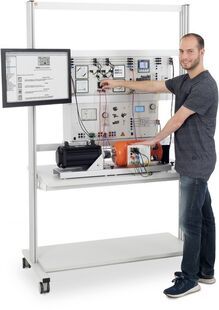"Micro Grids" - Control of stand-alone networks

"Micro Grids" - Control of stand-alone networks
A stand-alone power network is a type of power supply network which is closed and has no active lines coupling it to other parts of the electrical power supply grid. A stand-alone network is markedly smaller than a combined electricity grid and does not usually incorporate high-voltage power lines. For this type of network there are two distinct modes of operation, stand-alone mode and isolated parallel or generator-to-generator operation. This type of supply network is frequently used for the industrial power supplies of large businesses. When this stand-alone network is connected to a smart grid, it is referred to as a microgrid. This type of grid has three different operating modes: on-grid, off-grid and dual mode. Microgrids will be playing a huge role in the smart grids of tomorrow. A microgrid features the following benefits:
- Transmission and transformer losses are reduced
- More independence from major power suppliers
- Smart grid act as a back-up system
- Intelligently controlled power supply and consumption thanks to SCADA
- Power generation using renewable energy sources
- Optimizing the quality, reliability and sustainability of electricity